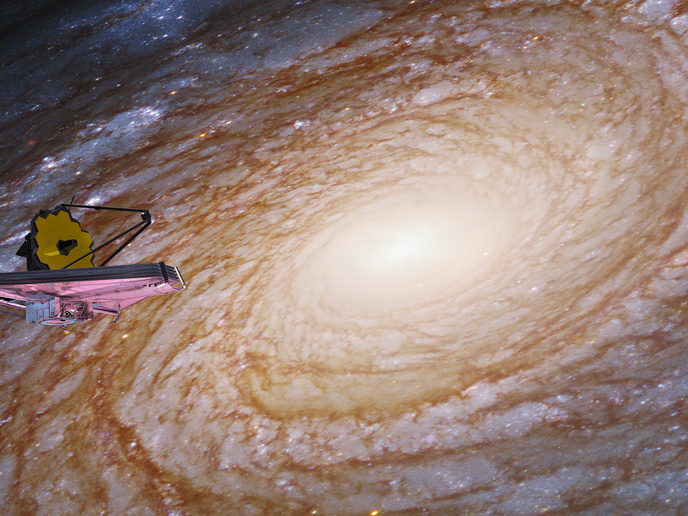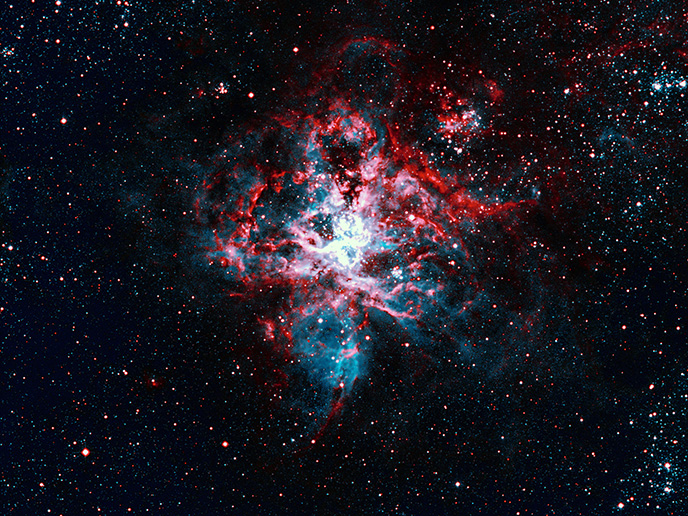Unlocking the secrets of exoplanetary atmospheres
The atmospheres of exoplanets hold information about their formation and evolution – their mass, radius and age, and even their habitability. As both convection and circulation processes determine the atmospheres of solar system planets, so they are also thought key to exoplanet atmospheres. To explore this, the ATMO project, which was funded by the European Research Council, used supercomputer simulations to validate their revised theoretical frameworks. “ATMO’s findings are already helping to explain some of the growing number of exoplanet observations, especially since the James Webb Space Telescope launched,” says project coordinator Pascal Tremblin from the French Alternative Energies and Atomic Energy Commission.
Diabatic convection
To study convection processes, ATMO used simulations developed for thermo-hydraulics in nuclear power plant cooling systems. “These very precise models revealed that a lot of convective systems were dynamically unstable, something not predicted by previous theories,” explains Tremblin. This enabled the team to build a generalised theory dubbed ‘diabatic convection theory’; diabatic meaning ‘heat exchange’. It superseded expectations in its ability to incorporate a range of instabilities, such as the release/pumping of latent heat by water condensation/evaporation. This makes it applicable to a variety of hydrodynamic phenomena, such as the Rayleigh-Taylor instability, which could help explain cloud formations. The theory’s extension to two additional applications: compositional diabatic convection and diabatic-convective magneto-hydrodynamic dynamos (MHDs), was also validated. “Extending the theory to MHDs is particularly valuable for the study of exoplanets which have ionised atmospheres, as well as for stellar atmospheres and interiors, also ionised as well as hot,” notes Tremblin.
Simulating circulation induced by irradiation
ATMO adapted an Earth climate model (GCM) to simulate irradiation-induced circulation in the atmosphere of exoplanets dubbed ‘hot Jupiters’. While these gas giants resemble our own Jupiter, being very close to their stars they have very hot surface temperatures. “We wanted to characterise the deep circulation in the atmosphere of such planets over thousands of years, not the usual hundreds of days,” says Tremblin. The team’s work resulted in the first ‘palaeo-climate’ studies of hot Jupiters, with an ATMO researcher now the lead for these types of studies.
Two key breakthroughs
ATMO’s work explains a long-standing conundrum: the inflated radius (often around twice the size) of hot Jupiters in relation to our own Jupiter. Since the first hot Jupiter was observed over 20 years ago, several explanations have been proposed. “We showed that vertical atmospheric circulation alone can produce a hot deep atmosphere, replacing cold fluid in deep layers with fluid heated in upper layers,” explains Tremblin. “This was previously missed because GCM simulations were initially set too cold and ran timescales too short to capture the temperature increase.” ATMO also demonstrated the advantages of its diabatic convective theory to describe known convective systems such as: Earth atmosphere moist convection, oceanic thermohaline convection, fingering convection in star interiors and steam/liquid convection in nuclear power plant cooling systems. “Our theory can also accommodate the radiative/chemical convection in exoplanet atmospheres that occur due to the slow reactions of carbon and nitrogen chemistry and fast radiative processes caused by the opacity of these molecules,” notes Tremblin.
Beyond the horizon
ATMO’s diabatic convection work has already contributed to exoplanet atmospheric models to help interpret James Webb Space Telescope observations. Its global circulation models have also been used to make predictions about the inflated radii of hot Jupiters. “We successfully reproduced the hot deep atmosphere necessary to explain how the exoplanet WASP-76b has an inflated radius,” adds Tremblin.
Keywords
ATMO, Jupiter, exoplanet, atmosphere, James Webb Space Telescope, convection, circulation, planet, solar system







